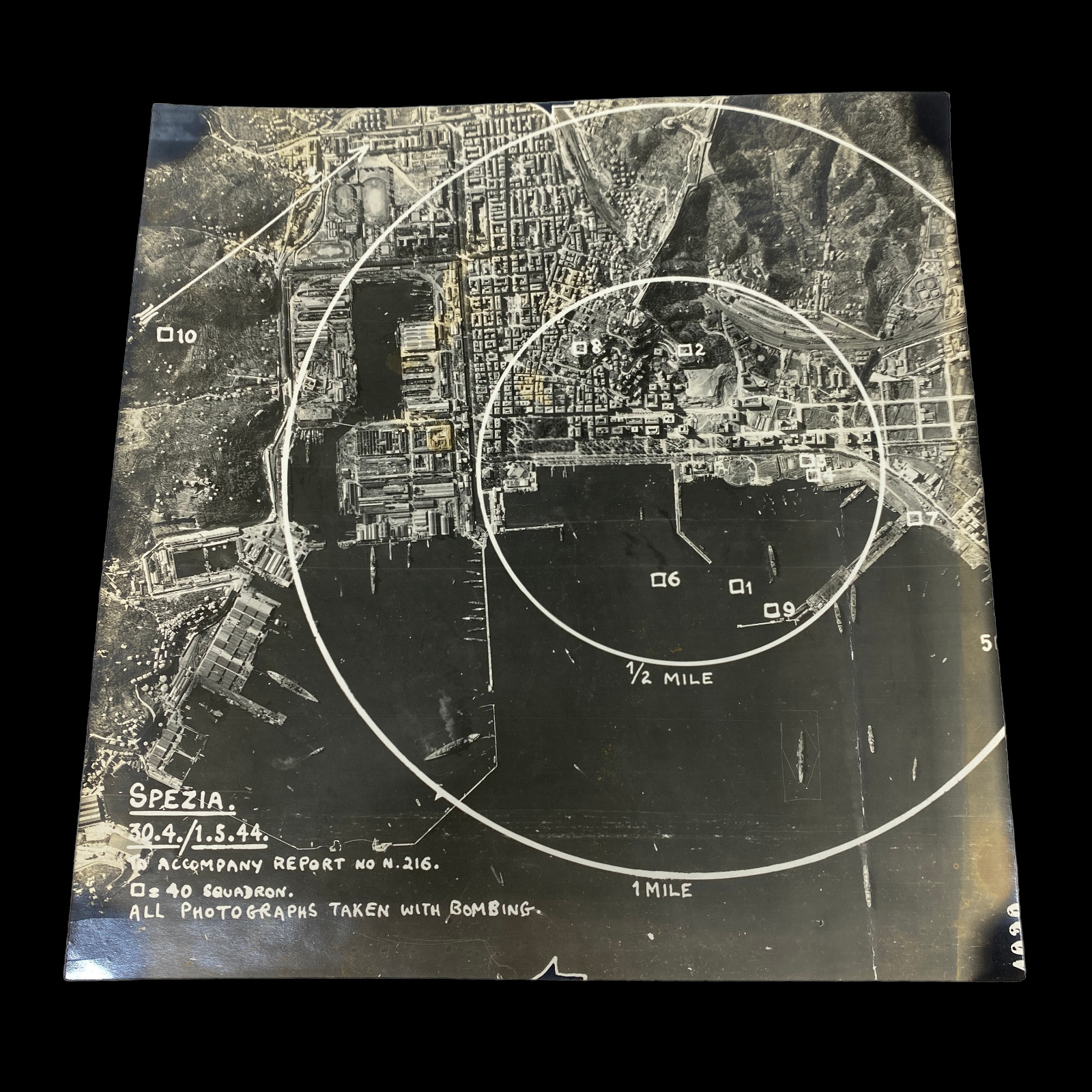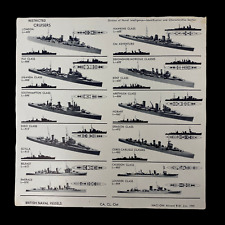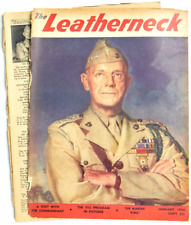When you click on links to various merchants on this site and make a purchase, this can result in this site earning a commission. Affiliate programs and affiliations include, but are not limited to, the eBay Partner Network.
Comes with hand-signed C.O.A.
This original WWII aerial mission photograph was taken by the R.A.F. 40th Squadron during a bombing mission over Spezia on January 5th, 1944. This historic R.A.F. bomber photograph was taken from the bomb-bay door looking down at the target at a moment in time during a significant mission during WWII. The photograph is in excellent condition and is guaranteed to be an authentic, original piece from the R.A.F. 40th Squadron. Don't miss out on the opportunity to own a piece of history with this one-of-a-kind photograph. This photograph was taken after the squadron flew operations against targets in Sicily during the Allied invasion of that island in July–August 1943. The squadron moved to Southern Italy in December 1943, bringing it closer to its intended targets in Northern Italy and the Balkans, operating from Foggia Main airfield for the rest of the war in Europe. The squadron re-equipped with Consolidated Liberators in March 1945, flying its last mission of the war on the night of 25/26 April 1945, against marshalling yards North West of Salzburg, Austria
The Royal Air Force (RAF) 40th Squadron, also known as the "Fighting Cocks," was a bomber squadron that served during World War II. The squadron was formed in 1917 and served in various conflicts throughout the years, but it is most well-known for its role in the bombing campaigns of WWII.
The 40th Squadron was equipped with the Vickers Wellington bomber, a twin-engine aircraft that was used extensively by the RAF during the early years of the war. The Wellington was known for its durability and ability to fly long distances, making it well-suited for the bombing missions that the 40th Squadron was tasked with.
In 1940, the 40th Squadron was sent to Egypt to take part in the North Africa campaign. The squadron's primary objective was to support the British 8th Army by bombing German and Italian positions in Libya and Egypt. The 40th Squadron's Wellingtons flew many dangerous missions over enemy territory, often facing heavy anti-aircraft fire and fighter opposition.
In 1942, the 40th Squadron was transferred to the United Kingdom to take part in the strategic bombing campaign against Germany. The squadron's Wellingtons were used to bomb German industrial targets, including factories, airfields, and submarine pens. The 40th Squadron's bombing missions were extremely hazardous, as they often had to fly deep into German airspace, facing intense anti-aircraft fire and fighter opposition. Despite the danger, the 40th Squadron's crews were able to successfully complete many important missions, causing significant damage to the German war effort.
The 40th Squadron continued to fly bombing missions over Germany until the end of the war in 1945. The squadron's efforts were a significant contributor to the Allied victory in Europe, as their bombing missions helped to weaken the German war effort and pave the way for the final ground offensive.
The 40th Squadron paid a heavy price for its service, losing many of its crew members in the course of the war. The squadron was deactivated in 1946, but its legacy lives on as a reminder of the sacrifices made by the brave men who served in it during WWII.
In conclusion, the 40th Squadron of the Royal Air Force played an important role in the bombing campaigns of WWII. Equipped with the Vickers Wellington bomber, the squadron supported the British 8th Army in the North Africa campaign, and then took part in the strategic bombing campaign against Germany. The squadron's efforts helped to weaken the German war effort, contributing to the Allied victory in Europe. The 40th Squadron paid a heavy price for its service, losing many of its crew members in the course of the war, but their sacrifice will always be remembered.









